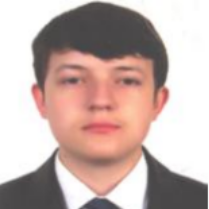International Journal of Modern Education and Computer Science (IJMECS)
IJMECS Vol. 16, No. 3, 8 Jun. 2024
Cover page and Table of Contents: PDF (size: 1879KB)
Data Clustering by Chaotic Oscillatory Neural Networks with Dipole Synaptic Connections
PDF (1879KB), PP.27-38
Views: 0 Downloads: 0
Author(s)
Index Terms
Data Clustering, Chaotic Oscillatory Neural Network, Dipole Synaptic Connections
Abstract
This article introduces a novel approach to data clustering based on the oscillatory chaotic neural network with dipole synaptic connections. The conducted research affirms that the proposed model effectively facilitates the formation of clusters of objects with similar properties due to the use of a slowly decreasing function of the dipole synaptic strength. The studies demonstrate that the degree of neuron synchronization in networks with dipole synaptic connections surpasses that in networks with Gaussian synaptic connections. The findings also indicate an increase in the interval of the resolution range in the model featuring dipole neurons, underscoring the effectiveness of the proposed method.
Cite This Paper
Roman Peleshchak, Vasyl Lytvyn, Ivan Peleshchak, Dmytro Dudyk, Dmytro Uhryn, "Data Clustering by Chaotic Oscillatory Neural Networks with Dipole Synaptic Connections", International Journal of Modern Education and Computer Science(IJMECS), Vol.16, No.3, pp. 27-38, 2024. DOI:10.5815/ijmecs.2024.03.03
Reference
[1]Oyewole, G. J., & Thopil, G. A. (2022). Data clustering: application and trends. In Artificial Intelligence Review (Vol. 56, Issue 7, pp. 6439–6475). Springer Science and Business Media LLC. https://doi.org/10.1007/s10462-022-10325-y
[2]Xie, J., Girshick, R., & Farhadi, A. (2015). Unsupervised Deep Embedding for Clustering Analysis (Version 2). arXiv. https://doi.org/10.48550/ARXIV.1511.06335
[3]Bank, D., Koenigstein, N., & Giryes, R. (2023). Autoencoders. In Machine Learning for Data Science Handbook (pp. 353–374). Springer International Publishing. https://doi.org/10.1007/978-3-031-24628-9_16
[4]Jiang, Z., Zheng, Y., Tan, H., Tang, B., & Zhou, H. (2016). Variational Deep Embedding: An Unsupervised and Generative Approach to Clustering (Version 3). arXiv. https://doi.org/10.48550/ARXIV.1611.05148
[5]Favaretto, C., Cenedese, A., & Pasqualetti, F. (2017). Cluster Synchronization in Networks of Kuramoto Oscillators 1 1This material is based upon work supported in part by NSF awards BCS-1631112 and BCS-1430279. In IFAC-PapersOnLine (Vol. 50, Issue 1, pp. 2433–2438). Elsevier BV. https://doi.org/10.1016/j.ifacol.2017.08.405
[6]Aihara, K., & Matsumoto, G. (1986). 12. Chaotic oscillations and bifurcations in squid giant axons. In Chaos (pp. 257–270). Princeton University Press. https://doi.org/10.1515/9781400858156.257
[7]Matsumoto, G., Aihara, K., Hanyu, Y., Takahashi, N., Yoshizawa, S., & Nagumo, J. (1987). Chaos and phase locking in normal squid axons. In Physics Letters A (Vol. 123, Issue 4, pp. 162–166). Elsevier BV. https://doi.org/10.1016/0375-9601(87)90696-7
[8]Lombardi, F. (2000). Chaos Theory, Heart Rate Variability, and Arrhythmic Mortality. In Circulation (Vol. 101, Issue 1, pp. 8–10). Ovid Technologies (Wolters Kluwer Health). https://doi.org/10.1161/01.cir.101.1.8
[9]Justin, M., Boudoue Hubert, M., Betchewe, G., Yamigno Doka, S., & Timoleon Crepin, K. (2020). Chaos in Human Brain Phase Transition. In Research Advances in Chaos Theory. IntechOpen. https://doi.org/10.5772/intechopen.86667
[10]Aihara, K., Takabe, T., & Toyoda, M. (1990). Chaotic neural networks. In Physics Letters A (Vol. 144, Issues 6–7, pp. 333–340). Elsevier BV. https://doi.org/10.1016/0375-9601(90)90136-c
[11]Kaneko, K. (1990). Clustering, coding, switching, hierarchical ordering, and control in a network of chaotic elements. In Physica D: Nonlinear Phenomena (Vol. 41, Issue 2, pp. 137–172). Elsevier BV. https://doi.org/10.1016/0167-2789(90)90119-a
[12]Angelini, L., De Carlo, F., Marangi, C., Pellicoro, M., & Stramaglia, S. (2000). Clustering Data by Inhomogeneous Chaotic Map Lattices. In Physical Review Letters (Vol. 85, Issue 3, pp. 554–557). American Physical Society (APS). https://doi.org/10.1103/physrevlett.85.554
[13]Penrouz R. (2005). Shadows of the Mind: In Search of a Science of Consciousness. IKI, 690.
[14]Hameroff S. (1994). Quantum coherence in microtubules: A neural basis for emergent consciousness? Journal of Consciousness Studies, 1, 91–118.
[15]Brown, J. A., & Tuszynski, J. A. (1999). A review of the ferroelectric model of microtubules. In Ferroelectrics (Vol. 220, Issue 1, pp. 141–155). Informa UK Limited. https://doi.org/10.1080/00150199908216213
[16]Tuszyński, J. A., Hameroff, S., Satarić, M. V., Trpisová, B., & Nip, M. L. A. (1995). Ferroelectric behavior in microtubule dipole lattices: Implications for information processing, signaling and assembly/disassembly. In Journal of Theoretical Biology (Vol. 174, Issue 4, pp. 371–380). Elsevier BV. https://doi.org/10.1006/jtbi.1995.0105
[17]Hunt, C., & Stebbings, H. (1994). Role of MAPs and motors in the bundling and shimmering of native microtubules from insect ovarioles. In Cell Motility (Vol. 27, Issue 1, pp. 69–78). Wiley. https://doi.org/10.1002/cm.970270108
[18]Slyadnikov Е. Е. (2007). Physical model and associative memory of the cytoskeletal microtubule dipole system. Journal of Technical Physics, 77 (7), 77–86.
[19]Hopfield, J. J. (1982). Neural networks and physical systems with emergent collective computational abilities. In Proceedings of the National Academy of Sciences (Vol. 79, Issue 8, pp. 2554–2558). Proceedings of the National Academy of Sciences. https://doi.org/10.1073/pnas.79.8.2554
[20]Lytvyn, V., Peleshchak, R., Peleshchak, I., Cherniak, O., & Demkiv, L. (2021). Building a mathematical model and an algorithm for training a neural network with sparse dipole synaptic connections for image recognition. In Eastern-European Journal of Enterprise Technologies (Vol. 6, Issue 4 (114), pp. 21–27). Private Company Technology Center. https://doi.org/10.15587/1729-4061.2021.245010
[21]Peleshchak, R. М., Lytvyn, V. V., Cherniak, О. І., Peleshchak, І. R., & Doroshenko, М. V. (2021). STOCHASTIC PSEUDOSPIN NEURAL NETWORK WITH TRIDIAGONAL SYNAPTIC CONNECTIONS. In Radio Electronics, Computer Science, Control (Issue 2, pp. 114–122). Zaporizhzhia National Technical University. https://doi.org/10.15588/1607-3274-2021-2-12
[22]Thrun, M. C., & Ultsch, A. (2020). Clustering benchmark datasets exploiting the fundamental clustering problems. In Data in Brief (Vol. 30, p. 105501). Elsevier BV. https://doi.org/10.1016/j.dib.2020.105501




